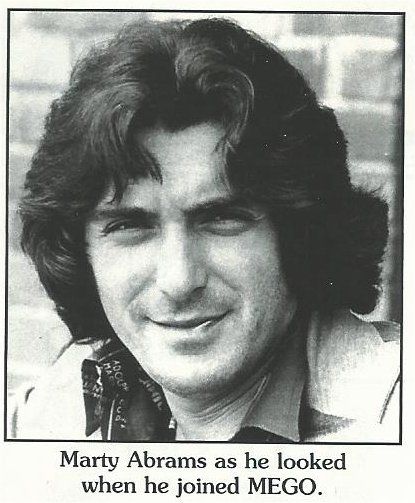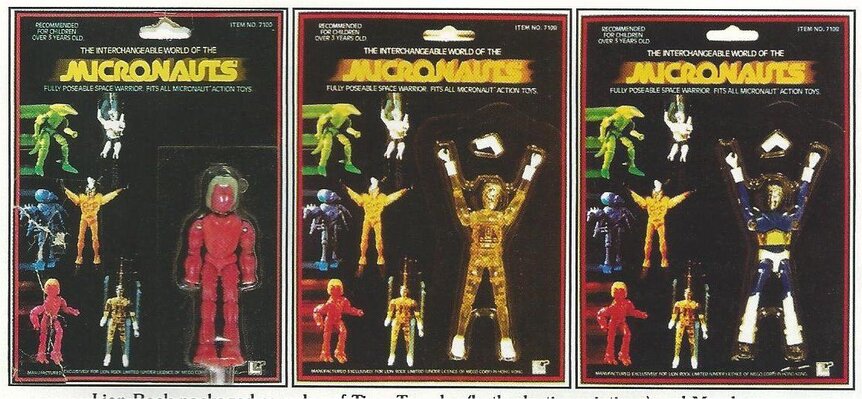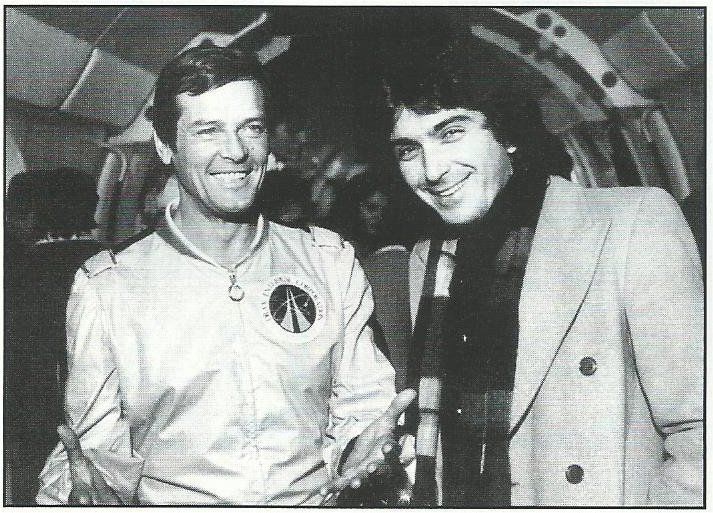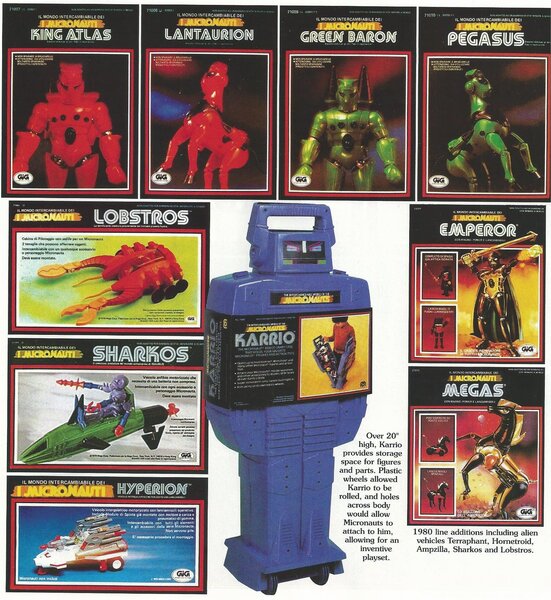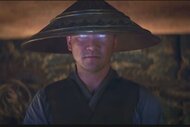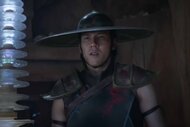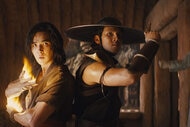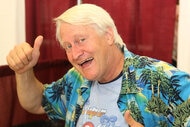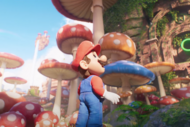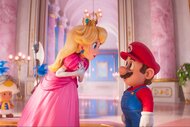Create a free profile to get unlimited access to exclusive videos, sweepstakes, and more!
Marty Abrams, father of the modern action figure, brought back Mego. So what's next?
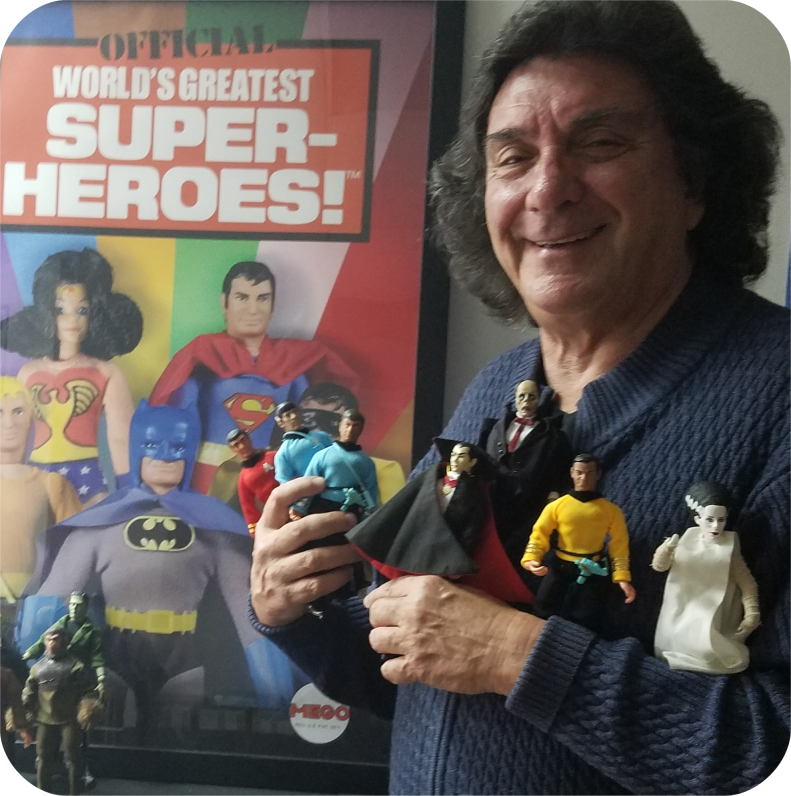
World-renowned toy company Mego Corporation, the inventor of the modern collector’s market, is back in the toy game after 36 years. The Mego brand, a modest dime store toy company founded in 1956 by David and Madeline Abrams, exploded in popularity when their son Marty became president of the Mego Corp. in 1971.
With an excellent business sense and a sharp eye for toys and what the market was lacking, Abrams began making deals with pre-existing licenses and intellectual properties. By being the first brand to produce toys based on television, movie, and comic book characters, Mego Corp. created a playing field where children and new collectors could see their favorite characters come to life in their hands.
My personal favorite Mego property is without a doubt Micronauts. From its humble beginnings in Japan — created by Takara, who wasn’t quite sure what to do with the science fiction line of robot toys — Abrams figured out a way to bring the toys to the States and market them in a way that would make their popularity soar.
By the early '80s, Mego Corporation could no longer compete with the popularity of the new Star Wars action figures by Kenner. Mego filed for bankruptcy and officially closed its doors in 1983. Years passed by, and not a peep was heard from the once toy giant. Until today, when Hasbro Toys came knocking with an opportunity that would lead to the revival of Mego Corp. and allow a new generation of fans to collect these charming '70s-style action figures once again.
SYFY WIRE spoke with Abrams of Mego Corporation to talk shop about Mego, the toy industry, and some of what fans can expect from Mego in the not-too-distant future!
I wanted to start off with Micronauts. Since Mego Corporation was focusing so heavily on the superhero brands at the time, was doing a deal with Takara Tomy and its robot toys a big stray for you guys?
We were in the toy business. Going for Micronauts was a natural progression of what we were currently doing. I think it’s funny that the first thing you’re touching on is Micronauts; everyone else is focusing on the Mego line that you can find in the stores. The basic superheroes, Star Trek, and the Planet of the Apes series we do with the licensed stuff we have.
Micronauts came in in 1976, and we had been doing licensed stuff of anything that was out there on the current marketplace. When we decided to go down the Micronaut road, it just became an extension of the Mego brand, and the branding we were doing. We were making action figures, we were making playsets, and making toys of multiple figures within brands. Micronauts had all of the above, plus one additional piece of the pie, which was construction and building. You could literally build your own brand. You could take characters apart and put them back together again. It was an art form, and really, just a fun brand for us to do.
I saw that Hasbro did some work with Micronauts a few years back — is there any chance at a Mego Corporation Micronauts revival since your new action figure line has been so successful?
The answer to that question is that the reason Mego Corporation is back today is because of Micronauts and Hasbro. When I brought Mego out of bankruptcy, the key IP at the time was Micronauts. Hasbro came around and bought the rights to Micronauts from me personally because the Micronauts IP was still mine. And that’s how I got the money to go back and launch the Mego Corporation revival with the products you’re seeing today.
Micronauts was, for all intents and purposes, the predecessor to Transformers. You’d referred to them earlier as Takara Tomy, but back then that wasn’t the company’s name; it was just Takara. When we hooked up with them, Mego Corporation wasn’t just the first company to create licensed action figures, but we were the first company to do business with a major Japanese toy company. When I made that original deal with Takara, that deal with the manufacturers that first year made the toys too expensive for consumers, and we couldn’t make any money. We had to turn around and pay them a royalty and then ship the products out of the factories in Japan and over to China.
But once we did that, we were able to manufacture Micronauts at a cost that was acceptable for American consumers to buy at the right price. Micronauts was a huge hit for us. Not only in America, but we had worldwide rights for distribution in Europe as well as South America — we sold them everywhere! We did that for three years, and then Star Wars came out, and that really kicked our butts. So we had to go back to Takara and their design team, this is back in 1980, to redesign the product line to be able to compete with Star Wars [figures]. We had to find a way to take Micronauts and really build a brand. Which we did, by the way!
We started seeing what was happening in the Japanese market, because while the toys weren’t quite transforming, they did transform on some level. We said, "Let’s put hinges on the Micronauts," and when that became new, they became Transformers by the end of 1981. Micronauts were the prequel to Transformers. And when we were going to relaunch Micronauts with the Transformers connection, we just didn’t have enough staying power in the industry. Our banks pulled our bag lines and we went into bankruptcy. And that’s when Hasbro took it over and built Transformers.
So, to answer your question, Hasbro owns Micronauts and has for about the last eight years or so. They’re in the process of doing what they do best, which is delivering movies and television and tons of ideas to toys. Among everything, Micronauts is one of the brands that they’re doing. Hasbro is building a universe, like the MCU. They have five key brands in that writing room, which is MASK, ROM, G.I. Joe, Micronauts, and one more, probably Transformers.
Now that Mego action figures are back on the shelf and they’re doing well, what are the biggest differences you’re seeing from a business perspective now as opposed to Mego’s original run in the '70s and '80s?
It’s clearly the digital Amazon position and buying online directly from the company. There are companies that buy from you and there are resellers that sell on Amazon directly, Walmart directly, Target directly. That whole level of being able to purchase instantaneously all over the world from hundreds of different websites that all have your brand. It just makes your product get to that many more people that much quicker. There’re more eyes on your product from all different angles, faster. And back then, we were ahead of the collector’s market. In fact, we created the collector’s market! Even our Sky Dancers, which sold 35 million units, is what created the flying superhero toy.
That’s why we relaunched Mego. When we were doing the figures, we owned at any given time DC and all their brands and Marvel with all of their brands. So, between the license and everything under it, we owned the rights to just hundreds of different characters. You can see it today with just the Marvel universe and the interchangeability. We turned around and we branded it "The World’s Greatest Superheroes." It was a collective. When we did Star Trek and Planet of the Apes, then the TV shows like CHiPS and Fonzie from Happy Days, it became a collector’s market.
When Mego went out of business, that market didn’t die. It just made us stop adding characters to our umbrella. But that’s when people who wanted the characters started trading figures back and forth at shows, between collectors, and leading up to the digital age where these toys were being sold on eBay.
Knowing what I know today, I see why I’ve been called the father of the modern action figure. Even if there were some better figures out there at the time, like Star Wars. And there are other IPs today, like Masters of the Universe, that are collectible, but their parent companies don’t have that massive presence of collectability with lots of brands under it.
Speaking of collectability in regard to Mego Corporation’s return: We now live in a world with a big and prevalent pop culture convention presence. Are you available for fans to meet you and see Mego touring on the convention circuit?
All of the above — last year we showed for the very first time at San Diego Comic-Con, and we are going back. We will be in Louisville, Denver, Minneapolis, Providence, Richmond … we will probably be at a ton of comic cons coming up.
We will set up a booth, and I sign autographs next to some of the bigger guys like Winkler and Shatner. It’s nice, because people at conventions will buy my Star Trek figures, and then they can take it over for both me and Shatner to sign. But I know which conventions I can and can’t compete at — Mego is too small, and sometimes there’s just too much noise. But at the smaller shows, people are excited to meet us and talk to us, and we’re creating new customers all the time.
Let’s segue to a more personal level. Putting aside all financial costs and difficulties of obtaining licenses aside, what would be the ideal toy that you'd want to make?
I’ll speak as a fan for a moment, but to be honest, I just can’t wait to see what Hasbro does with Micronauts. I really feel that it was the greatest toy that I ever made. From its roots with Takara, this tiny Japanese company that didn’t know what to do with these toys, we just turned them into a brand and made them take off. Even back then, we made several hundred million dollars on Micronauts. In today’s money, you can times that by four. And this all happened without the help of Nickelodeon and other TV networks, because that just didn’t exist yet. It was completely market-driven by our little company. It was such an accomplishment that I just can’t wait to see what Hasbro has in mind for them.
Okay, I have to ask because fellow KISS fans want to know. Are the Spaceman and Catman action figures on their way?
Yes! When they’re coming I can’t say. My people would kill me. But yes, they will be coming out. They’re on their way.
Do you have any hobbies or interests that your fans, friends, or family may not expect from you?
Here’s the real story and the reason I was so susceptible to relaunching Mego as a brand. I’ve been in the toy industry for many, many years. I’ve created huge amounts of product. But I was so excited to go back and start doing the Mego brand again. You’re really talking to one of the most boring people in the United States. I do nothing but think about toys all the time. Sure, I like going to the Yankees game or Madison Square Garden. Quite candidly, my grandson is a world-famous wildlife photographer, and I love going to Africa with him to take pictures of the rhinos and lions and leopards.
I love that, but there's no charge, there’s no kick or emotional explosion like creating a product. Seeing it rendered from three-dimensional, then seeing it get manufactured, then selling your brand to the marketplace. There’s nothing like that. So that’s really where I spend 92 percent of my time.
And as for Mego, we plan on expanding. We’re going to get bigger and bigger. We made plans with Stan Lee and his estate prior to his passing last year. There’s a lot more exciting stuff for Mego literally as we speak.
